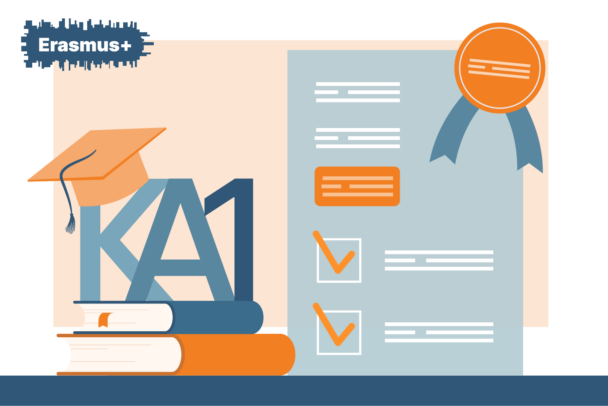What is Erasmus+ Accreditation?
Erasmus Accreditation is like a ‘loyalty card’, similar to those distributed by large chain shops or supermarkets, but in this case, it is specifically for schools of all types and levels.
A school needs to receive the accreditation only once every seven years-programme.
This is sufficient to make it recognized by the National Agency as an organization that deals with international mobility on a regular basis. Hence, the school that receives the Accreditation does not need to apply again for it within the 2021-2027 Programme.
To apply, educational institutions must outline their own strategy for medium- and long-term internationalization and modernization by presenting a European Development Plan (EDP) and an Erasmus+ Plan, that can be updated periodically.
Duties and benefits of Erasmus+ Accreditation
They must also commit to meeting Erasmus+ quality standards, which specify how the school will organize the international activity.
Receiving the Erasmus accreditation has many advantages.
Indeed, upon acceptance, the candidate school benefits from a stable source of funding for the whole duration of the Programme (until 2027), simplified application procedures in response to Erasmus+ calls, as well as a quicker evaluation process.
Accredited organizations have no a priori limit on the number of participants. Once accredited, they only have to fill out a very easy application, usually in February, to request funding for the mobility in the current year. Then, the National Agency provides the corresponding funding, and the beneficiary organizations have 15 months (usually from the following June) to organize participants’ mobility.
Since it is not required to provide the destinations for mobility at the application stage, the beneficiaries will be able to slightly modify the numbers of planned mobility according to their organizational needs.
An accreditation can end if no applications for funding have been made for 3 consecutive years.
How to participate in the Erasmus+ programme
The Erasmus+ deadline for accreditation usually expires in October.
However, if you missed the deadline, don’t worry!
Your school still has many opportunities to participate in the Erasmus Programme.
First, Key Actions 1 proposes one particular action, i.e., short-term projects dedicated specifically to non-accredited organizations.
Short-term projects allow a maximum of 30 participants to take part in international mobility.
These restrictions, however, make preparing an application simpler, which is why short-term projects constitute a perfect entry point for schools with no prior experience.
Moreover, there may be two deadlines for short-term projects in the same year: the main one is usually in February, but the National Agencies may decide to open a second deadline for short-term projects in October.
A second possibility is to join a consortium that has already been accredited.
You can also consider making your school act as a hosting organization for another accredited foreign school. Check the Europass Projects Platform to find the right partners.
Finally, don’t forget that the call for accreditation reopens every year, and keep in touch with your National Agency! They may provide national priorities, and it is always a good idea to address them in addition to the Four Erasmus Horizontal Priorities to make your project even more competitive.
